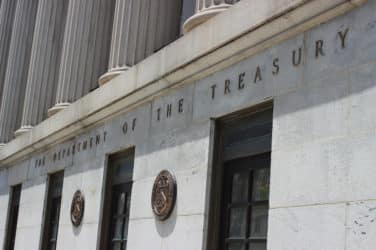
Statement On Approval Of FINRA Proposed Rules To Establish Post-Trade Transparency In The Treasury Markets, SEC Chair Gary Gensler, Feb. 7, 2024
The Commission approved a rule change[1] proposed by the Financial Industry Regulatory Authority (FINRA) to provide for the first time public dissemination of U.S. Treasury transactions on a trade-by-trade basis.[2] I am supportive of greater post-trade transparency in the Treasury markets, which should benefit investors and issuers alike.
Adam Smith, known as the father of modern economics, noted in The Wealth of Nations more than 200 years ago that the whole economy benefits when the price of information is lowered, or information is free.[3]
Centuries later, Smith’s maxim is relevant every day in our capital markets. Transparency matters, whether it’s prior to the transaction (so-called pre-trade transparency) or after the transaction (so-called post-trade transparency). We see this in our daily lives, whether we’re shopping for a car, a security, or a copy of Adam Smith’s book. We benefit from knowing what others paid for a product or a security in a transaction that recently occurred.
Post-trade transparency promotes liquidity and helps investors. There is something about that sunshine. It gives everyone a sense of where the current market is. The public gets to see details of the last trade that two counterparties just negotiated in that market.
The FINRA rule approved brings greater post-trade transparency to those shopping for or selling Treasury securities.
Some form of transparency in the markets goes back to Buttonwood Agreement in 1792, not long after Smith wrote The Wealth of Nations. A century after Smith’s book, in the 1870s, Thomas Edison developed his stock ticker, which brought enhanced post-trade transparency to the equity markets.
Switching over to fixed income markets, fast forward, it’s been more than 20 years since FINRA established the Trade Reporting and Compliance Engine (TRACE). TRACE and a related system run by the Municipal Securities Rulemaking Board (MSRB) have brought post-trade transparency to the corporate, municipal, and mortgage bond markets. Such dissemination is on a trade-by-trade basis throughout the day.
Investors have not yet benefited from such post-trade transparency in the Treasury markets. The reporting to TRACE of trades in the Treasury markets was not required until 2017, and even then, it was reported only to regulators. In 2023, reporting to regulators was accelerated from an end-of-day basis to no later than 60 minutes after the time of the trade—but still, only to regulators.
As it relates to public dissemination, it was only in 2020 that FINRA began to publish weekly aggregate Treasury market activity using TRACE data. In 2023, FINRA increased the frequency to daily, but still, it was only on an aggregated basis.
The FINRA rule, for the first time, will provide the public with post-trade transparency in the Treasury markets on a trade-by-trade basis, rather than on an aggregated basis. The scope of what will be published to the public will include a trade’s time, price, direction, venue, and volume.
This is an important step towards bringing the Treasury market’s post-trade transparency closer to that which has benefited investors in the corporate, municipal, and mortgage bond markets. It covers the seven “on-the-run” Treasury securities,[4] with dissemination to the public just on an end-of-day basis rather than an intraday basis. Nevertheless, the reported Treasury data will allow market participants to reconstruct market activity. This has many benefits. For example, it will enable traders to compute the relative spreads of those other markets to the Treasury markets.
I look forward to possible future consideration to further align Treasury post-trade transparency with what we’ve come to benefit from in corporate, municipal, and mortgage markets. For instance, consideration in the future could be given to require similar public dissemination for the “off-the-run” Treasury securities as well as to move public dissemination to intraday rather than just end-of-day. A number of commenters raised these points in response to the U.S. Department of the Treasury’s request for information.[5]
Our markets dramatically have transformed since Adam Smith wrote The Wealth of Nations in the 1770s, and Thomas Edison developed his stock ticker in the 1870s. Our markets also have developed significantly since FINRA first brought post-trade transparency to other parts of the fixed income markets 22 years ago. Today’s FINRA rule change is an important step to enhancing post-trade transparency to the U.S. Treasury markets—the most important part of our markets.
After all, the Treasury markets are the base upon which the capital markets are built, and Treasuries are integral to how the Federal Reserve conducts monetary policy. They are how we, as a government and taxpayers, raise money—we are the issuer. Investors and issuers alike will benefit from today’s approval.
In closing, I’d like to thank the Inter-Agency Working Group on Treasury Market Surveillance and its member agencies for their work regarding the Treasury markets.
Further, I’d like to thank members of the SEC staff for their work on this approval, including: Haoxiang Zhu, David Saltiel, Andrea Orr, Dave Shillman, Eric Juzenas, Justin Pica, Josh Nimmo, Will Magliocco, Tom Eady, Steve Gibson, Yue Ding, and Sharon Park in the Division of Trading and Markets.
Source: SEC






